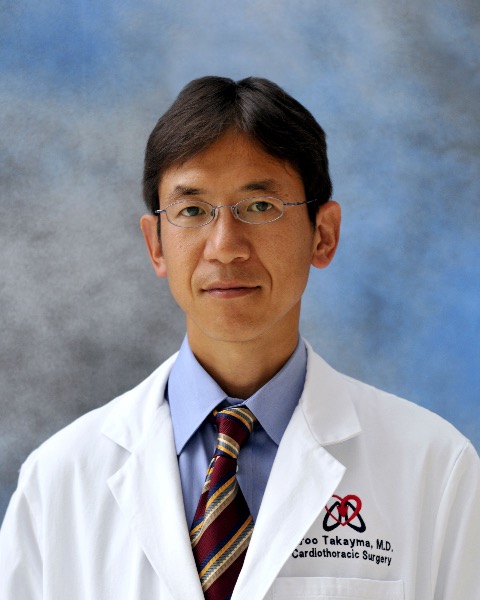Adult Cardiac
Category: Scientific Abstract: Oral/Poster
RESILIA Tissue in Surgical Aortic Valve Replacement for Patients with Bicuspid Aortic Valves: Findings from a 7-year IDE study
H. Takayama1, J. Bavaria2, D. Heimansohn3, T. Beaver4, B. Griffith5, L. G. Svensson6, p. Pibarot7, M. Borger8, V. Thourani9, E. H. Blackstone6, L. Cornwell10, J. Puskas11
1Columbia University, New York, New York 2Hospital of the University of Pennsylvania, Dept. of Cardiovascular S, Philadelphia, Pennsylvania 3St. Vincent Heart Center of Indiana, Indianapolis, Indiana 4University of Florida, Gainesville, Florida 5University of Maryland, Baltimore, Maryland 6Cleveland Clinic, Cleveland, Ohio 7Quebec Heart and Lung Institute, Quebec, Quebec 8Leipzig Heart Center, Leipzig, Sachsen 9Piedmont Heart Institute, Atlanta, Georgia 10Baylor College of Medicine, Houston, Texas 11Mount Sinai Morningside Hospital, New York, New York
1Columbia University, New York, New York 2Hospital of the University of Pennsylvania, Dept. of Cardiovascular S, Philadelphia, Pennsylvania 3St. Vincent Heart Center of Indiana, Indianapolis, Indiana 4University of Florida, Gainesville, Florida 5University of Maryland, Baltimore, Maryland 6Cleveland Clinic, Cleveland, Ohio 7Quebec Heart and Lung Institute, Quebec, Quebec 8Leipzig Heart Center, Leipzig, Sachsen 9Piedmont Heart Institute, Atlanta, Georgia 10Baylor College of Medicine, Houston, Texas 11Mount Sinai Morningside Hospital, New York, New York

Hiroo Takayama, MD, PhD
Columbia University
New York, New York, United States
Presenting Author(s)
Disclosure(s):
Hiroo Takayama, MD, PhD: No relevant disclosure to display
Purpose: Patients with bicuspid aortic valves may require aortic valve replacement at a younger age. To avoid the use of anticoagulants, younger patients are opting for bioprosthetic aortic valves. This study investigates the safety and effectiveness of RESILIA tissue over a period of 7 years in patients with BAV.
Methods: The COMMENCE trial is a prospective, observational, IDE study (NCT01757665). This sub-analysis focuses on patients requiring replacement of their native bicuspid aortic valves. In consultation with the FDA, all safety outcomes were defined using endpoints described by Akins et al. 2008. The safety endpoints and echocardiographic measurements were adjudicated by an independent clinical events committee and a dedicated echo core laboratory, respectively. Early event rates ( < 30 days) and Kaplan-Meier actuarial event-free probabilities at 7 years are reported. Paravalvular leak was defined as none, trace, mild, moderate, and severe. Longitudinal changes in mean transaortic gradient were modeled using a linear mixed effects model including all patients with available echo data at 3 months, and 1-7 years. This analysis is based on a data extraction on Mar 3, 2023.
Results: Of 689 patients in COMMENCE study, 672 underwent replacement of their native valve. BAV patients (n= 214) were younger to TAV (n=458) with a mean age of 59.8 ± 12.4 years vs 70.2 ± 9.5 years (P < 0.0001). 18.2% of the BAV patients and 2.83% of the TAV patients were < 50 years old. Mean follow-up was 5.1±1.8 years.
Similar safety profile (Table 1) was observed between the cohorts with more mortality in the TAV cohort. 7-year survival was 94% in BAV vs. 81% in TAV (P < 0.001) and no case of structural valve deterioration in BAV. Based on data available (n=209) BAV and (n=436) TAV patients with echocardiogram results, mean gradients were similar at 3-month post-op [BAV: 8.72 (95% CI = 8.26 - 9.22) vs TAV: 8.84 (95% CI = 8.51 - 9.19)] and at 7-year follow-up [BAV: 10.50 (95% CI=9.87- 11.15) vs TAV: 10.45 (95% CI=9.98-10.93)]. Among patients < 50 years, mean gradient (mmHg) at 7 years was 14.60 (95% CI =12.49 - 17.20) and 14.00 (95% CI = 10.73 - 18.30) in the BAV and TAV cohort, respectively. No patients experienced moderate/ severe PVL, mild PVL was 1.4% in BAV and 0.0% in TAV cohort.
Conclusion: Among patients with bicuspid aortic valves, surgical aortic valve replacement with the RESILIA tissue valve demonstrated sustained excellent outcomes through 7 years. Clinically stable hemodynamics were observed in younger patients, with no evidence of structural valve deterioration and very low rates of paravalvular and transvalvular regurgitation.
Identify the source of the funding for this research project: Edwards Lifesciences
